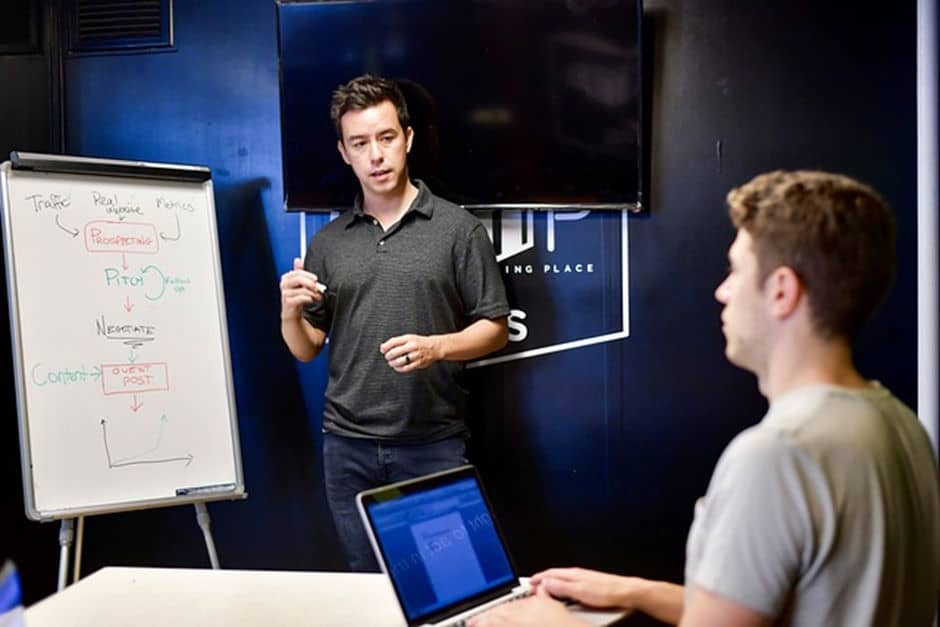Diving into the highly dynamic world of software development, you'll soon encounter an integral framework - the Software Development Lifecycle (SDLC). It's a roadmap sculpting the journey from the birth of a software idea to its tangible reality.
Understanding SDLC not only facilitates smoother workflows but also amplifies your success in this digital forging field. Stay with us as we become seasoned travelers through these fascinating landscapes of software creation.
Delving into the Basics of Understanding SDLC
SDLC, or Software Development Lifecycle, is a structured process employed by professionals globally while crafting software applications or systems. It represents the systemic evolution of a software product from its conceptualization to eventual deployment and maintenance.
By encompassing every phase a software undergoes, SDLC helps to carefully plan and control the development process, ensuring high-quality output and timely delivery. It's one indispensable aid to navigate this vast seascape of digital creation.
Why the Software Development Lifecycle Matters
Understanding SDLC and its importance is a prerequisite for any successful software venture. There are several key reasons for this:
- The structure that SDLC provides ensures a well-ordered development process, steering you clear of many common pitfalls.
- It promotes clear communication among teams about tasks and objectives, strengthening organizational synergy.
- A meticulous focus on each phase can alleviate potential hiccups down the line, like fixing bugs or coping with feature changes.
- Effective implementation of SDLC enables you to achieve robust output more predictably and within budget restrictions.
Crucially, this journey through SDLC becomes more navigable with Windchill software. This software aids in managing complex processes and integrating data across various stages, equipping teams to face challenges in a strategic manner within the rapidly evolving digital ecosystem.
A Closer Look at the Phases of SDLC
The structure provided by the SDLC is divided into various phases. Each phase has a specific focus, funneling efforts to particular aspects of development. Here's a brief overview of these stages:
- Planning: Before anything else, you need a roadmap. This step involves understanding project requirements and setting up a strategic plan.
- Analysis: Detailed analysis helps refine requirements and take into account any potential constraints or risks.
- Design: Archiving required functionalities, this phase is where the software layout is created detailing all technical specifications including database design and user interfaces.
- Construction/Implementation: The actual coding happens here! It's where your software starts taking shape.
- Testing: Critical for ensuring functionality, it involves identifying any bugs or flaws needing corrections before deployment.
- Deployment: After successful testing, your software is ready to be launched to the market!
- Maintenance: After release; constant monitoring, updates, and improvements keep the software relevant and bug-free.
All these phases are interconnected, forming an intrinsic cycle that breathes life into your digital creation!
How to Choose the Right SDLC Model for Your Project
Selecting the most suitable and secure SDLC model is integral to your project's success. But with numerous models like Waterfall, Iterative, Agile, or DevOps available, how do you make the right decision?
Your choice should prioritize project requirements, team expertise, and the desired pace of delivery. Smaller teams working on simple projects often benefit from the linear and straightforward approach of a Waterfall model.
On the other hand, Agile could be a preferred option for complex projects in high-velocity environments that demand continuous updates and flexibility. Lastly, Iterative and DevOps can significantly streamline processes for larger teams managing extensive projects.
Remember, there's no one-size-fits-all solution. Evaluate each model against your unique goals and circumstances to ensure you pick a winning plan for successful software development!
Critical Success Factors in Implementing SDLC
The effectiveness of SDLC largely hinges on how well it is implemented. Here are some crucial elements that contribute to its triumphant execution:
- Clear Communication: Articulating objectives, expectations, and progress boost collaboration and productivity.
- Comprehensive Documentation: Well-drafted documents during each phase ensure clarity and serve as useful future references.
- Proactive Risk Management: Identifying, assessing, and mitigating risks during early stages can prevent potential irregularities in the development process.
- Ongoing Training: Regular training sessions help teams keep up with the evolving technology trends and efficiently handle contemporary tools.
- Stakeholder Engagement: Continuous involvement of key stakeholders enables feedback-driven improvements to align better with user expectations.
Adhering to these factors fuels an efficient application of the SDLC process, creating an environment conducive to generating remarkable software solutions!
Embark on Your SDLC Voyage Today
Mastering the fundamentals of SDLC can gear you up for an exciting journey into the realm of software development. With careful planning and precise execution, coupled with effective tools like Windchill software, you're all set to navigate this dynamic avenue and unfold remarkable digital innovations!








